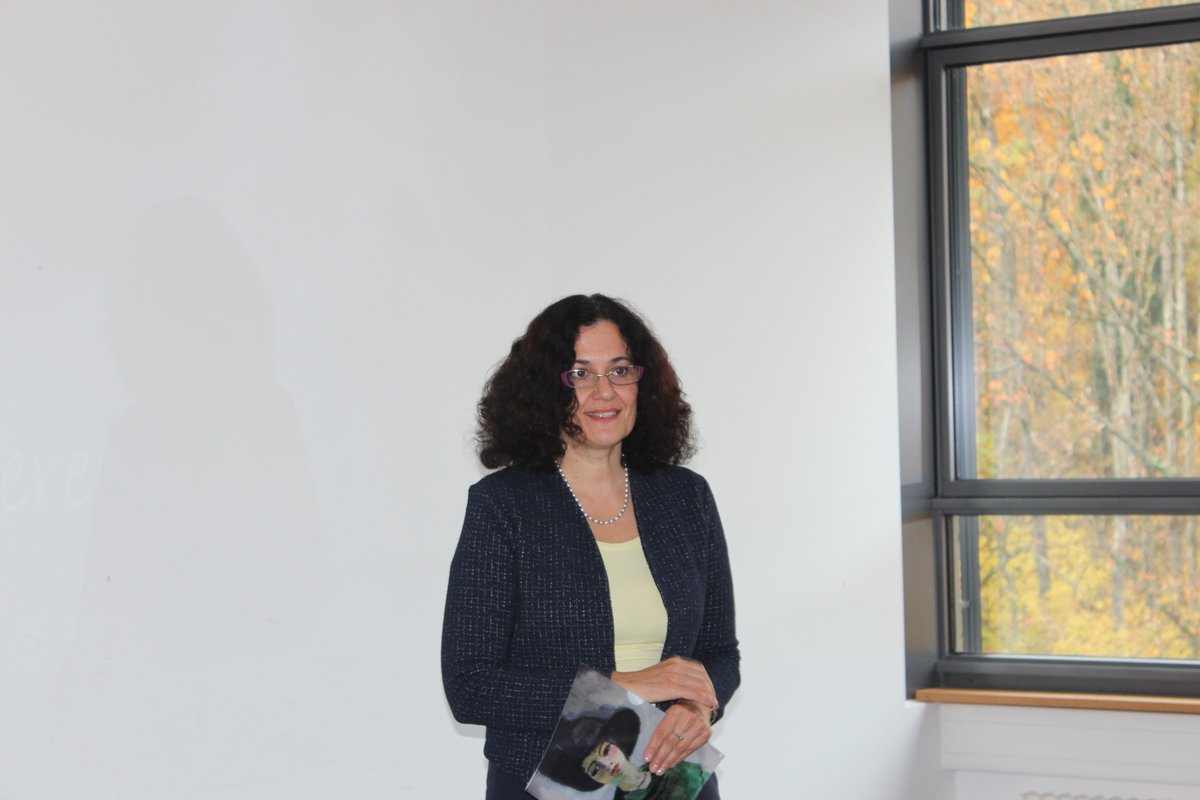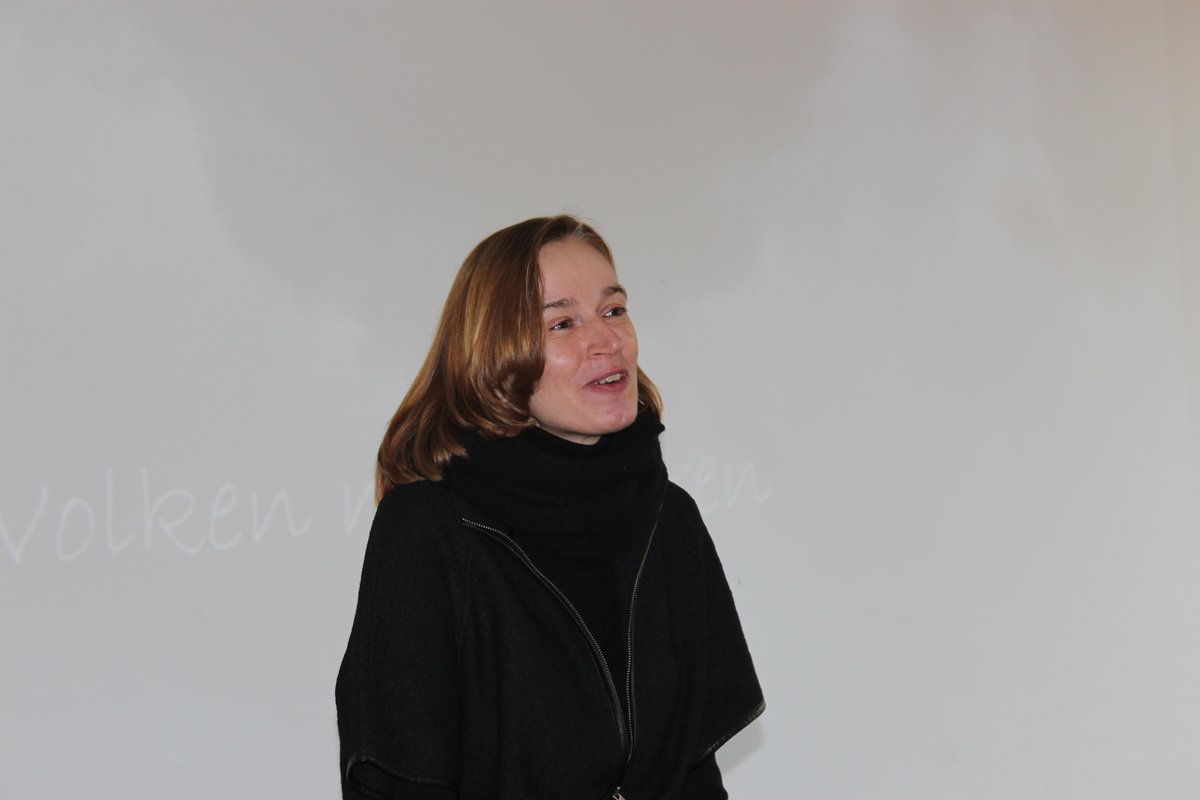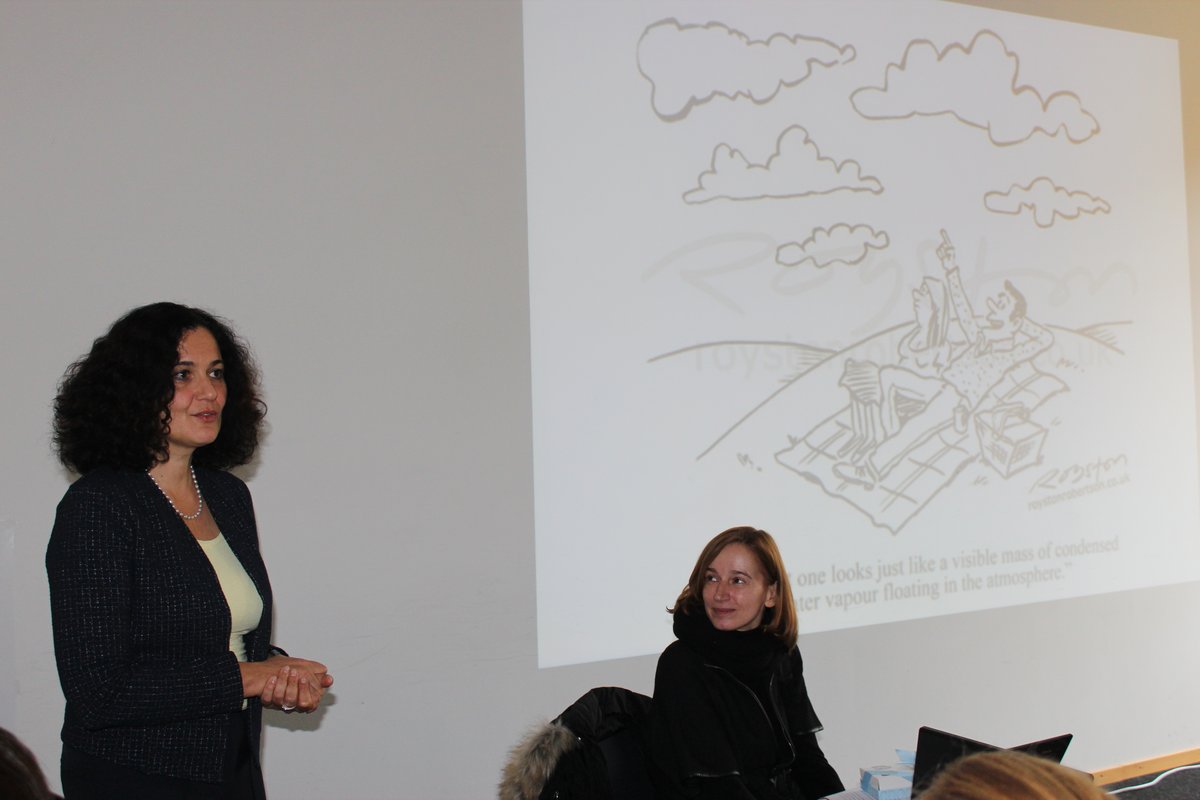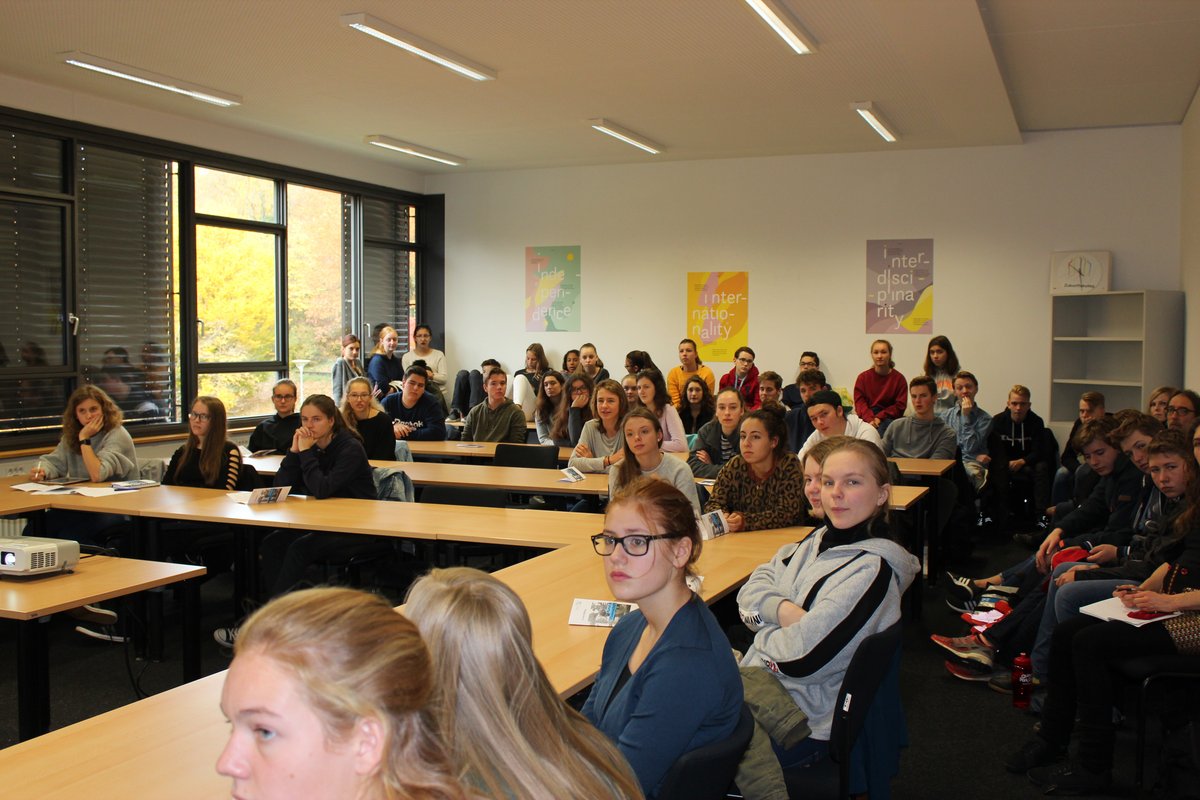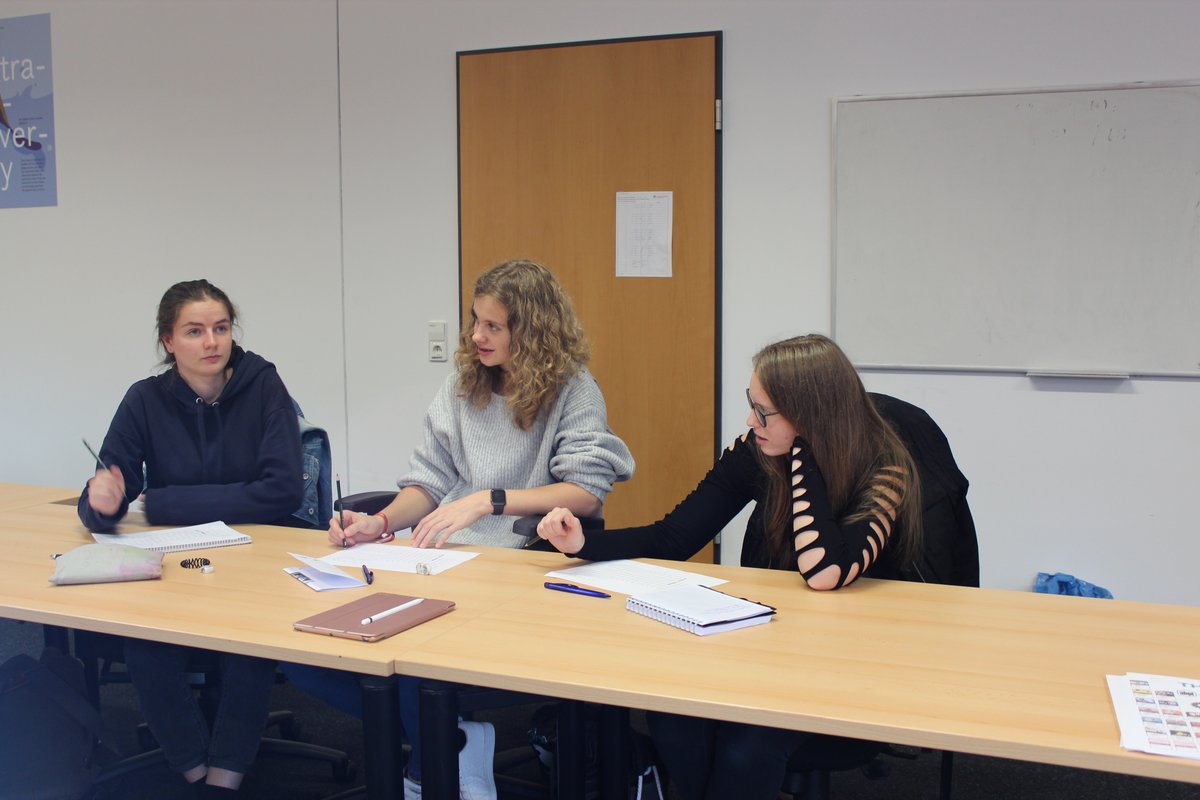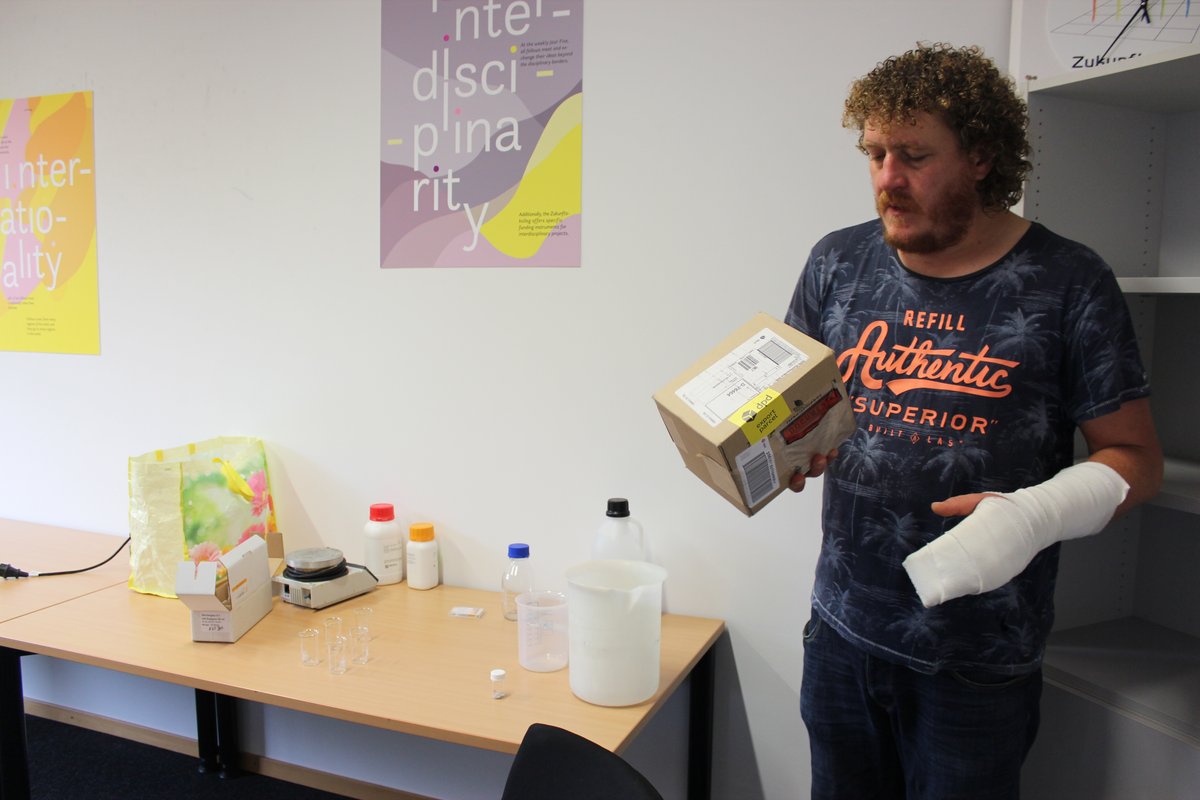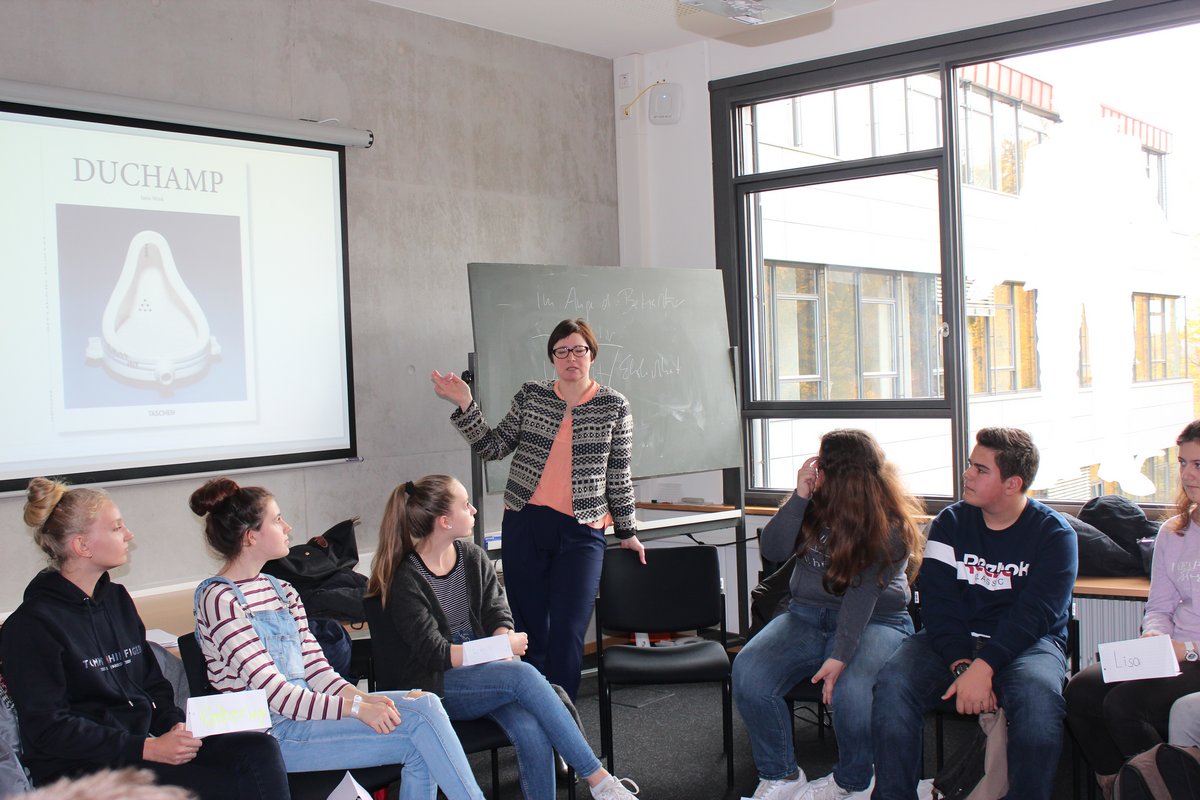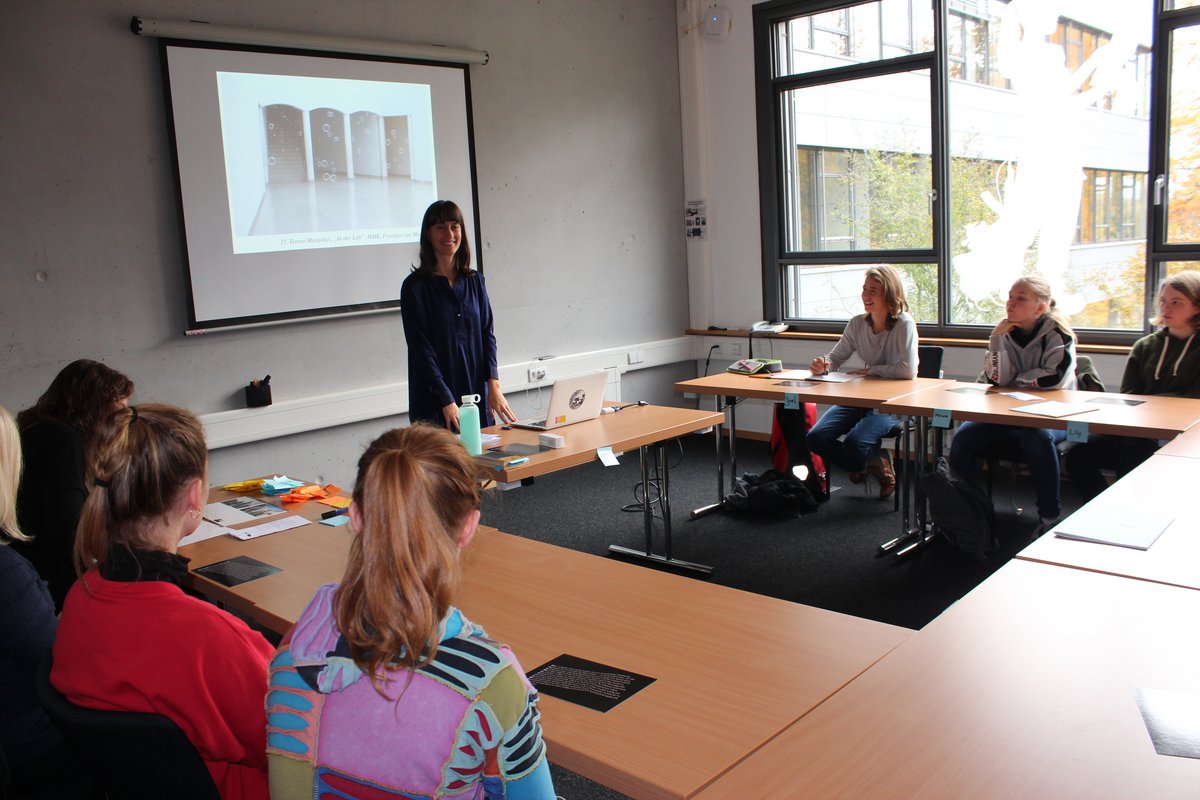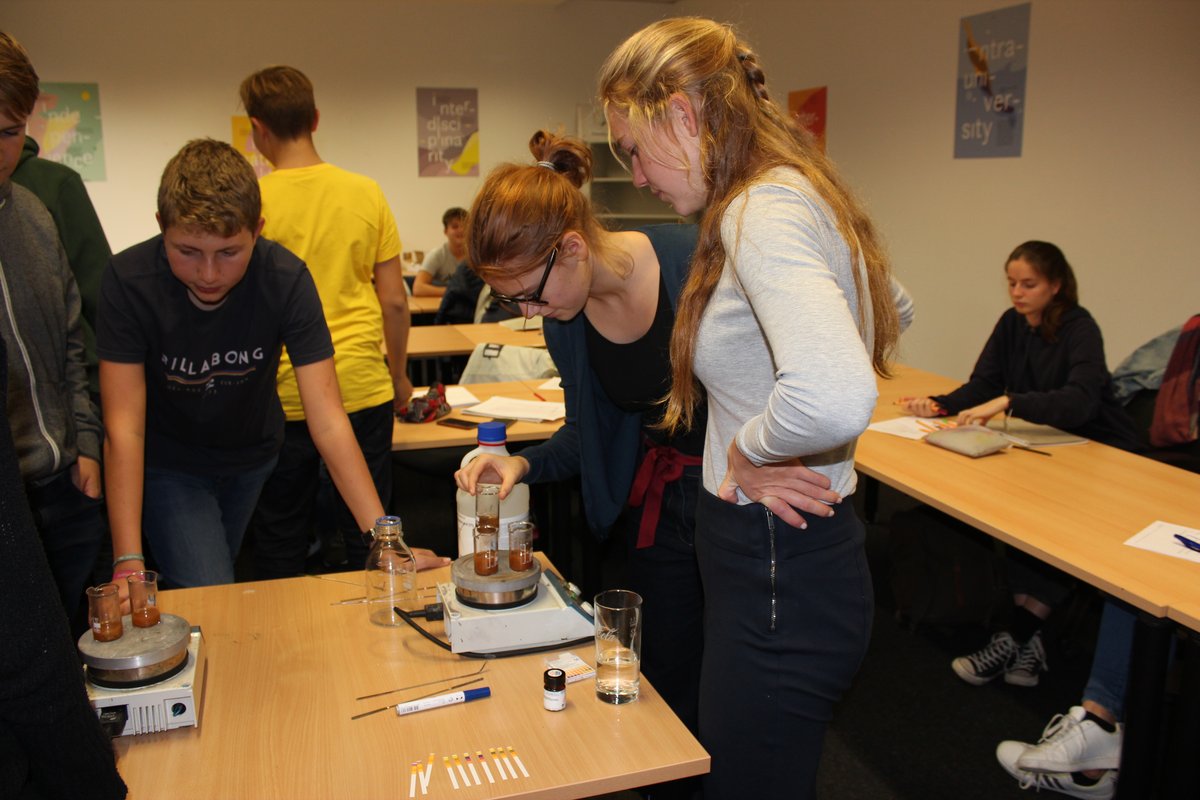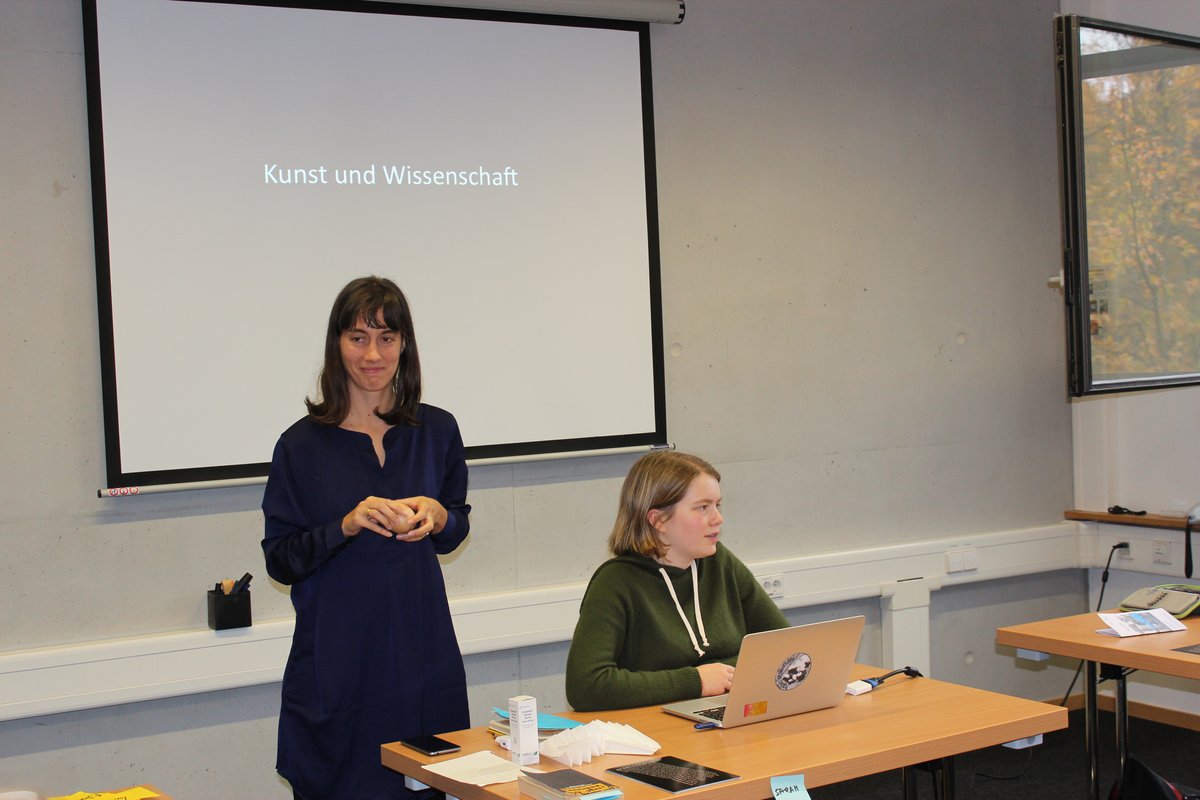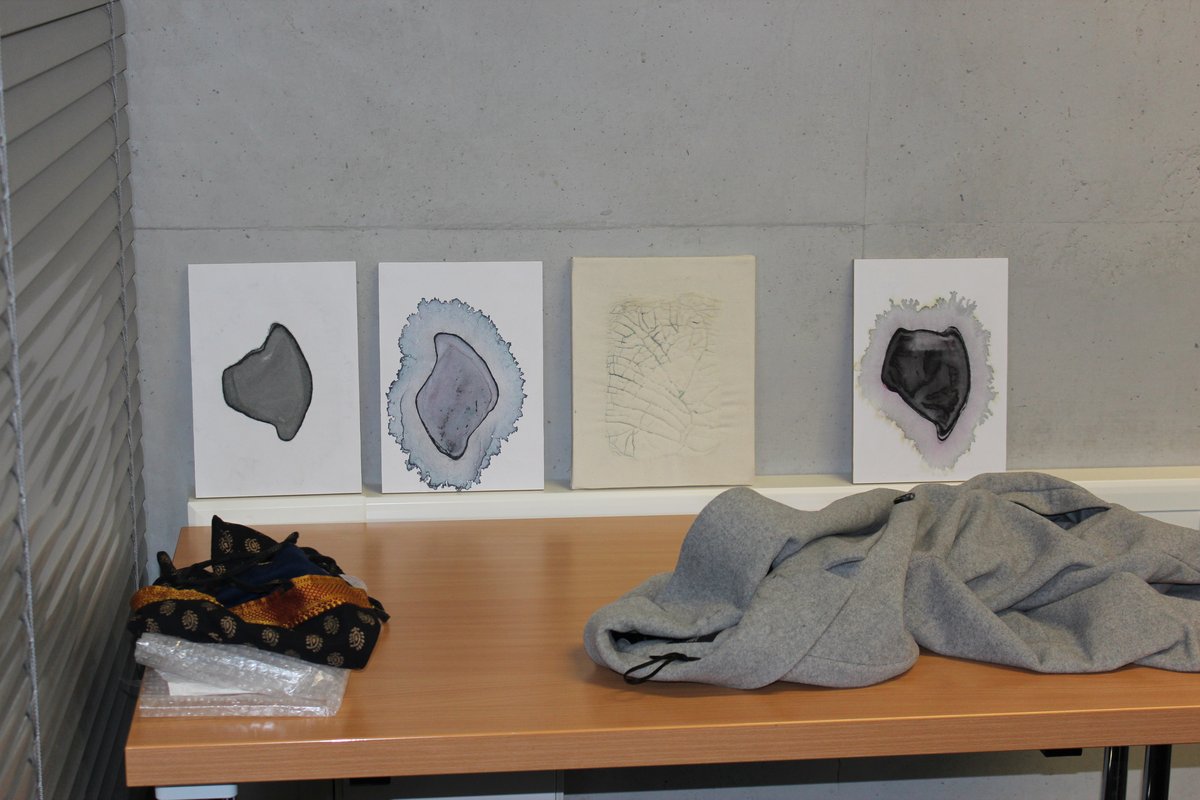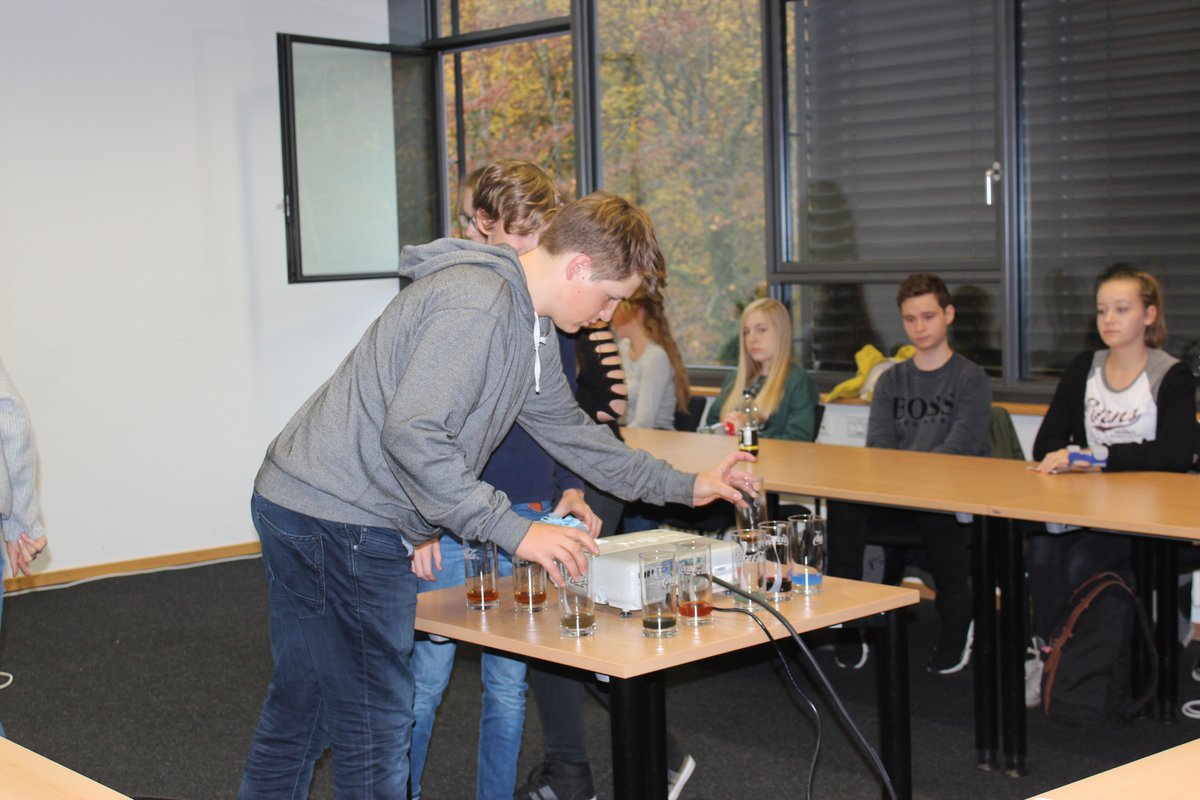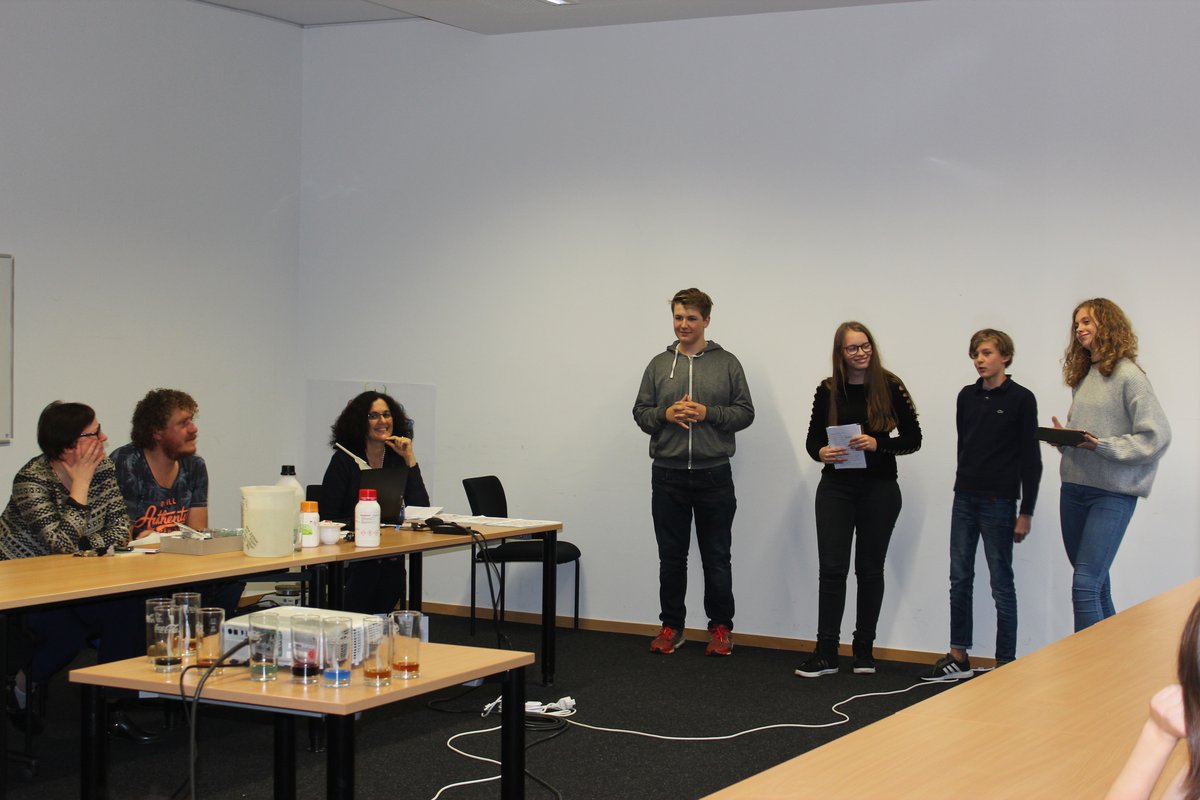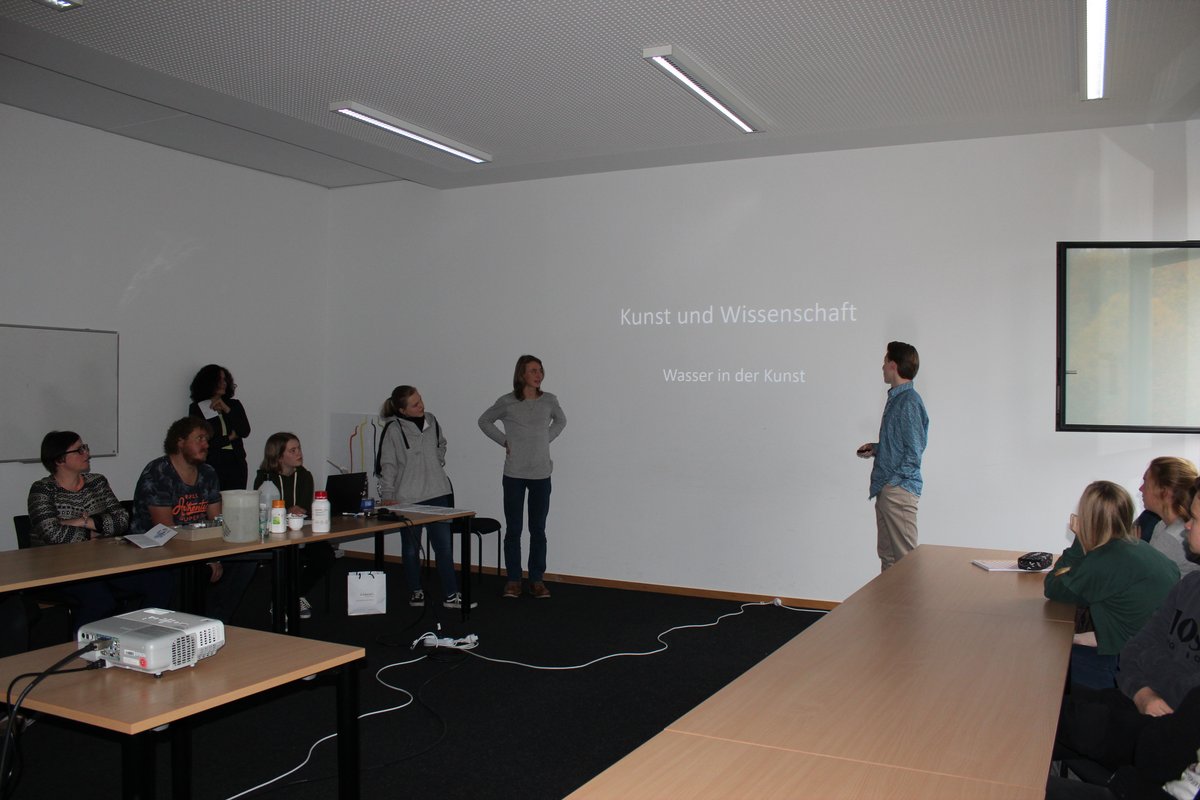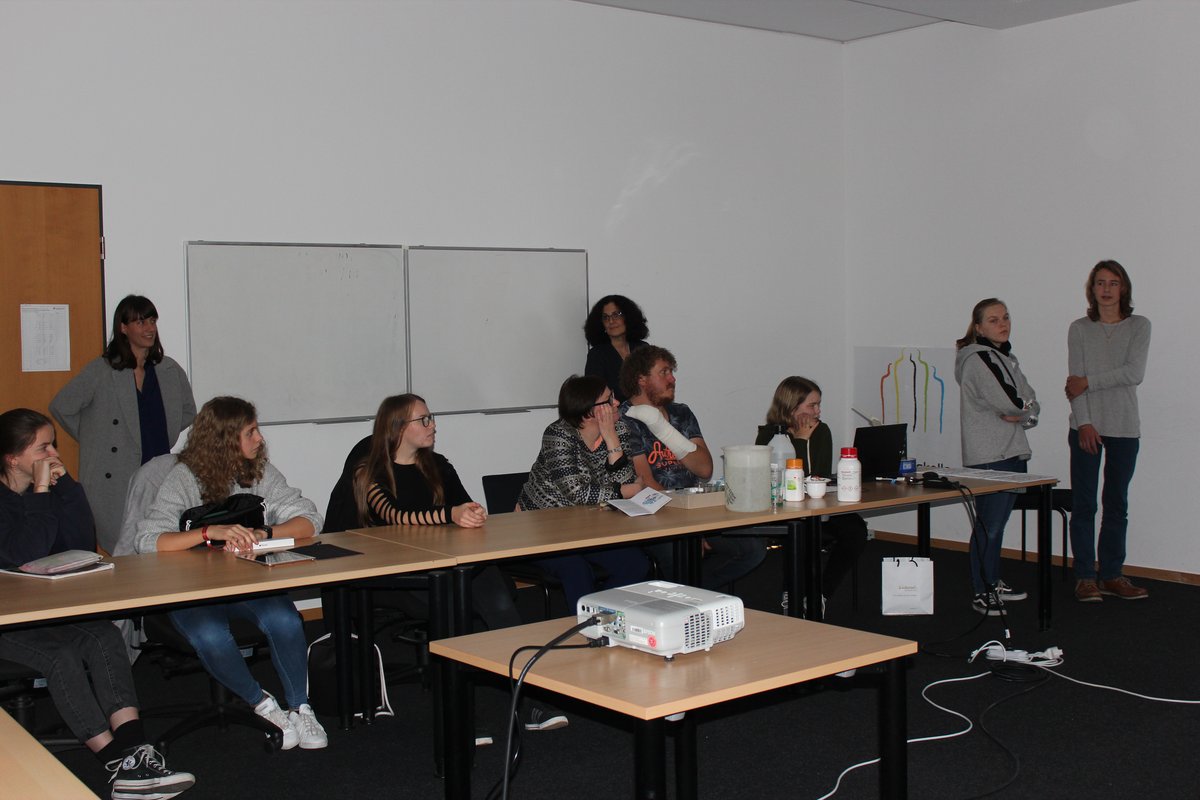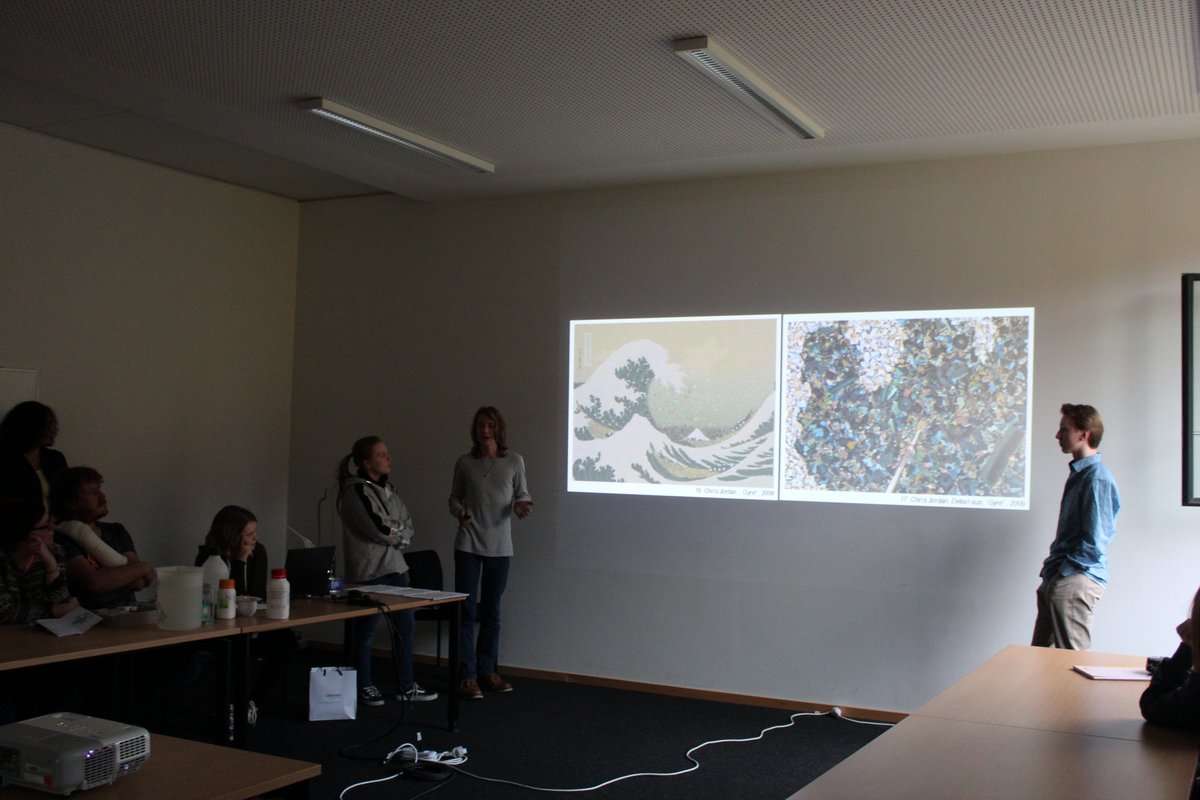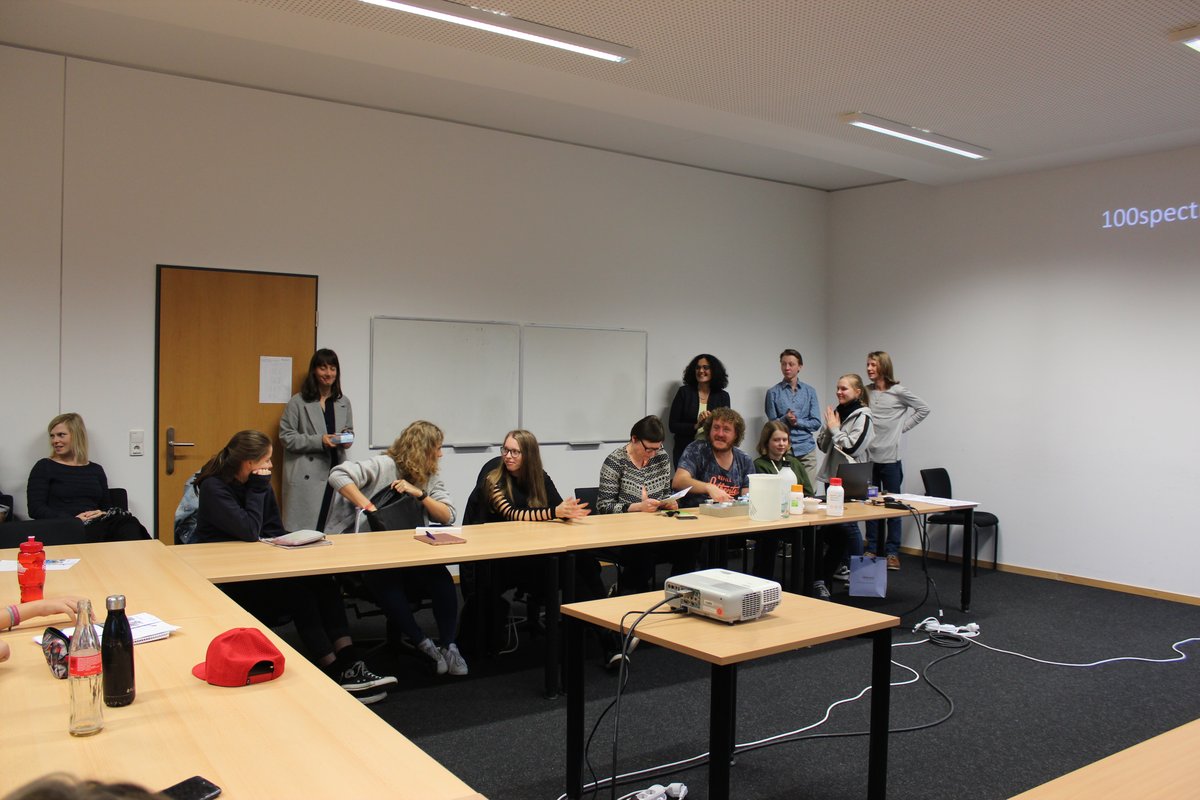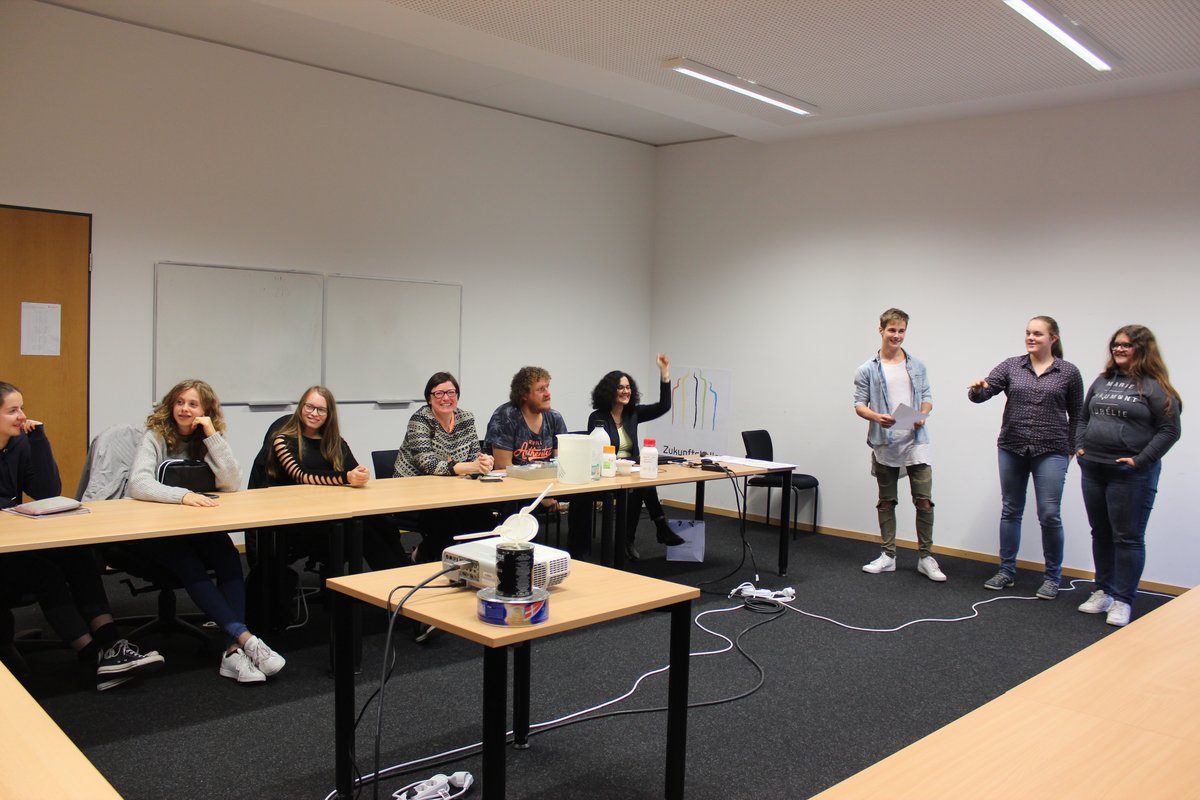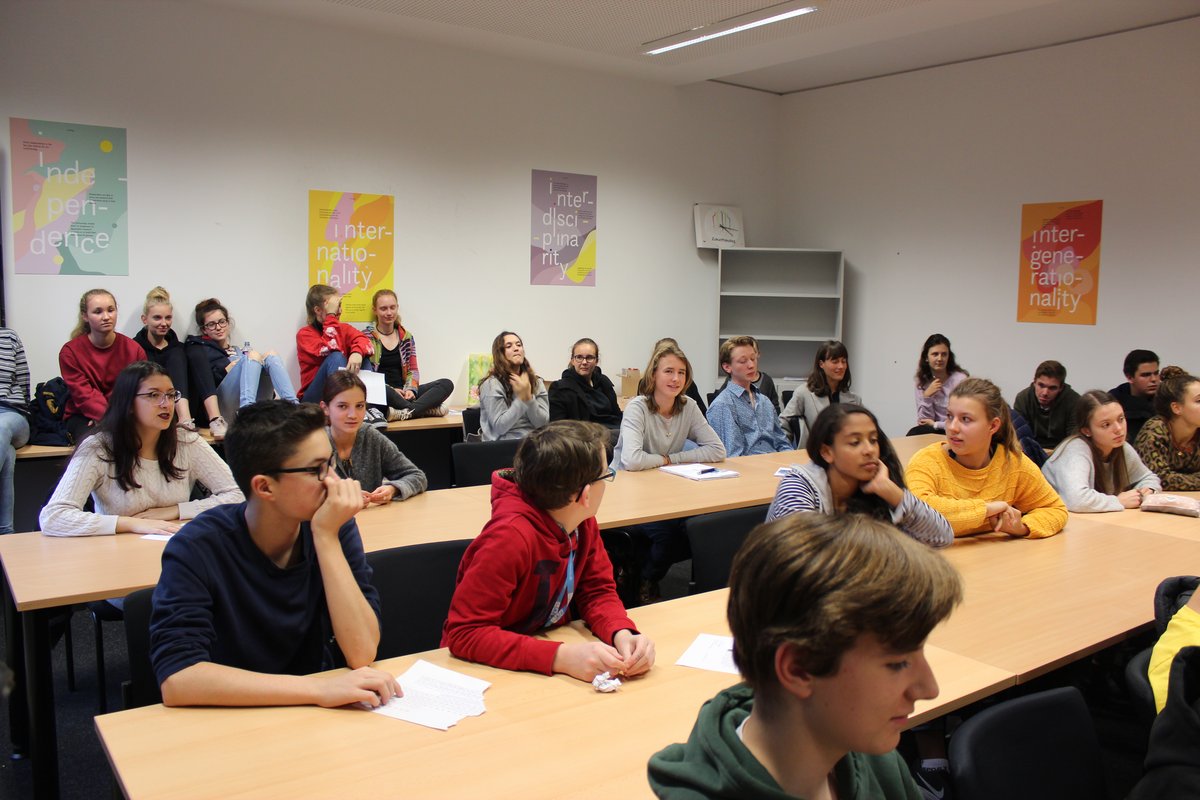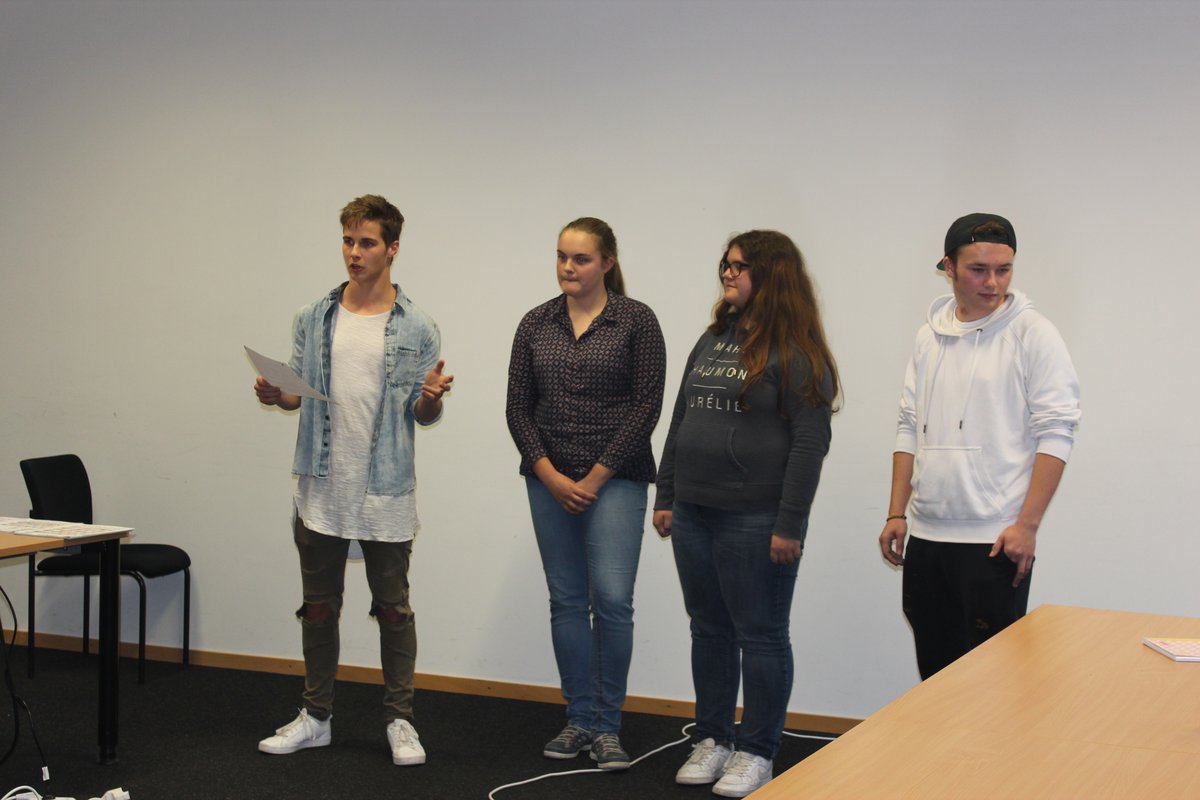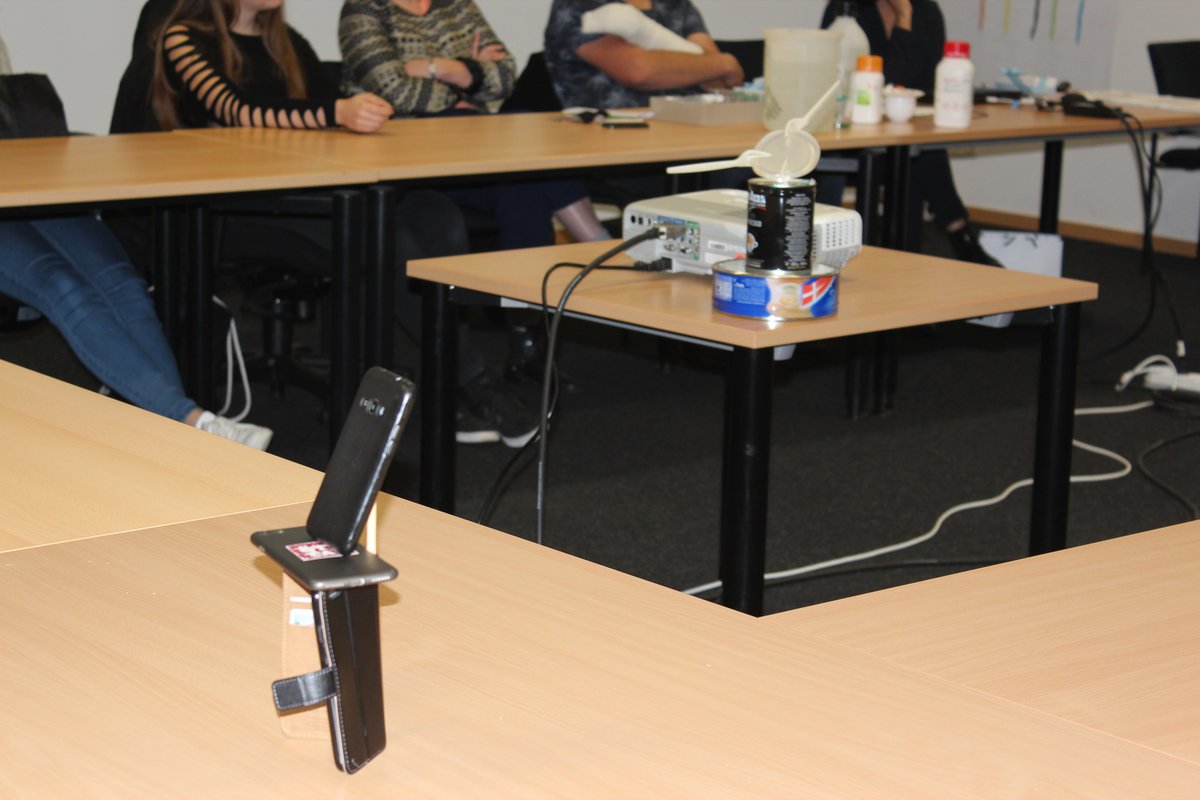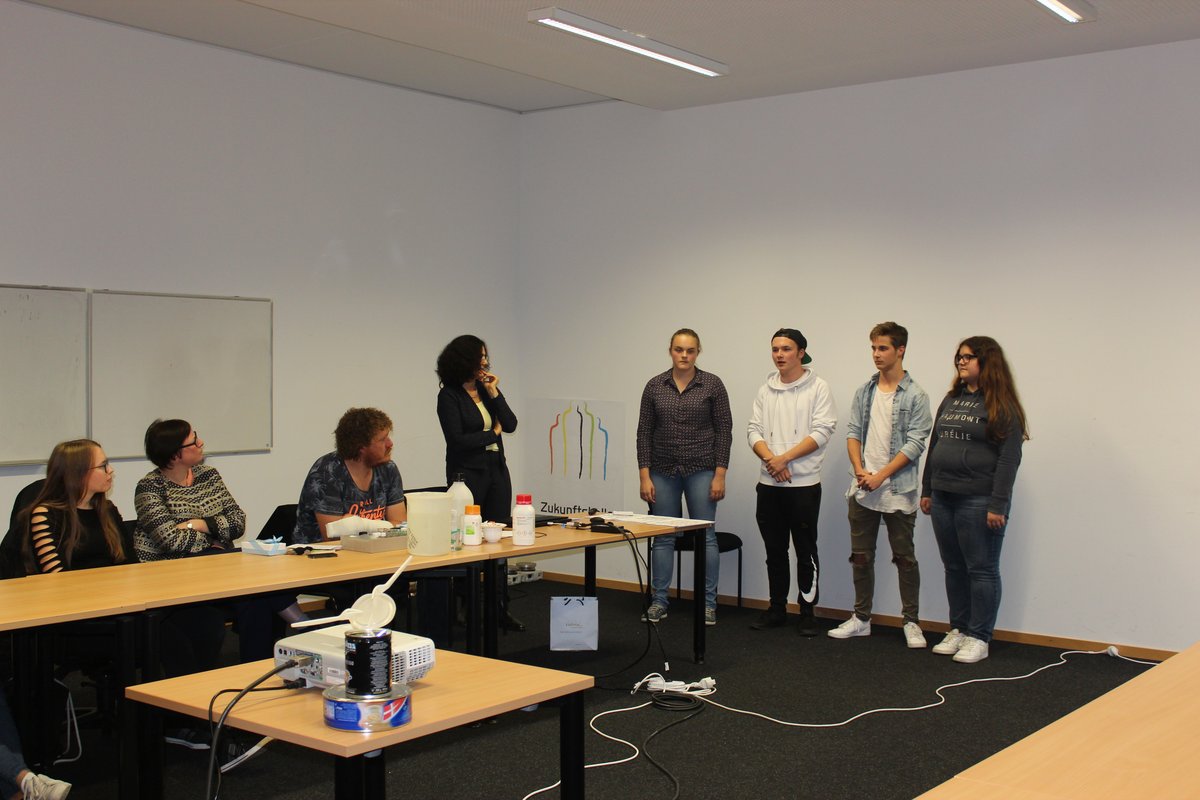Is it art and/or science?
The "Universitätstag 2018" hosted by the Hegau-Bodensee-Seminar, the Cluster of Excellence "Cultural Foundations of Social Integration” and the Zukunftskolleg at the University of Konstanz on 8 November 2018
After being greeted by Giovanni Galizia and Norina Procopan, the directors of the Zukunftskolleg and Hegau-Bodensee-Seminar respectively, the participants were treated to an exciting opening plenum lecture by Karin Leonhard. Her topic was “modelling clouds”, and she approached it from a range of both artistic and scientific aspects. Afterwards, the audience of schoolchildren was split into three different workshops.
Chemist Dennis Pingen and his group experimented with “the art of chemistry”. The philosopher Andrea Lailach-Hennrich asked her group to define art, and artist Sarah Bildstein and her group looked at artistic aspects of water.
Dennis Pingen let his group experiment with copper chloride, potassium manganate and iron chloride. “In one experiment, we dissolved copper(I) chloride, which is neon green in a solid state, into water”, Pia, Maylen, Celina and Leonie from the Alexander von Humboldt Gymnasium in Konstanz explain. "The water turned a light yellowish green. However, the copper(I) chloride then sank to the bottom so that the water did not really change its colour. We concluded that copper(I) chloride does not dissolve well into water. Another experiment involved dissolving potassium manganate into water. In its crystalline form, potassium manganate appears black, but if it is dissolved into water, it takes on a bright purple colour. We concluded that potassium manganate dissolves well into water”.
Joel Schwarz from the 8th grade took part in Sarah Bildstein’s workshop examining the relationship between art and water. His group was given the task of writing the names of countries on 50 sticky notes in three different colours and then attaching them to a map of the world. The yellow ones stood for countries most impacted by drought, the blue ones for countries with the greatest CO2 emissions and the red ones for countries suffering as a result of a high sea level. “It is part of Sarah Bildstein’s project “100 Spectres””, explains Joel Schwarz. “The current project refers to climate change, expressed artistically with the help of water. She gets water from the countries most impacted by climate change and has it shipped to Germany. In Konstanz, her scientific colleagues at the university determine the characteristics of the water sample - for example, its chlorine or salt content - and pass along that information to her. Based on this information, Sarah Bildstein then mixes more or less different tones into the water and then uses a technique known as chromatography to create her artwork in the studio. In this way, the water as well as her images of climate change are able to tell a story and raise awareness for the large problem facing our planet”.
Andrea Lailach-Hennrich and her group discussed what art is and whether it is subjective or objective. The schoolchildren split up into two opposing groups and each gathered evidence for their respective positions. “One strong argument made by the “subjective” group was that art is influenced by the individual experiences of the audience”, explains Sonja Schächtle from the Alexander von Humboldt Gymnasium in Konstanz. “One argument in support of the objectivity of art was that “the arts” were a subject taught in school. In order to evaluate the coursework, it must be possible to also evaluate art objectively”. At the end of the discussion, the participants of the workshop agreed that art can be both objective and subjective. One could imagine art to be like a house: “From the start, a house must be stable and built using technical means. At the same time, houses can be constructed in virtually any manner. Art thus includes a sort of technical “structure” which is objective. However, the manner in which the structure is assembled, the “icing on the cake” as you would say, is subjective”, Sonja Schächtle explains.
For the final presentation, the participants created a work of their own using a cookie jar, a coffee tin and three plastic forks. They named their work Heinz-Gerhardt. During the presentation, the schoolchildren were asked whether they considered Heinz-Gerhardt to be a work of art. For the most part, the participants agreed it was.
Pia, Maylen, Celina and Leonie were very happy to have taken part in the "Universitätstag" event: “We had a fantastic time in the workshop. Our leader was very good at what he did and really enjoyed his work. As a result, we also had a lot of fun with the experiments. He did a great job explaining complicated things using graphics or pictures from microscopes. Dennis Pingen used a ton of everyday examples, which made everything even easier to understand. We got to do a lot of the work ourselves, which, of course, was especially fun for us. We really appreciate being able to be a part of the workshop and would do it again in a heartbeat”.

